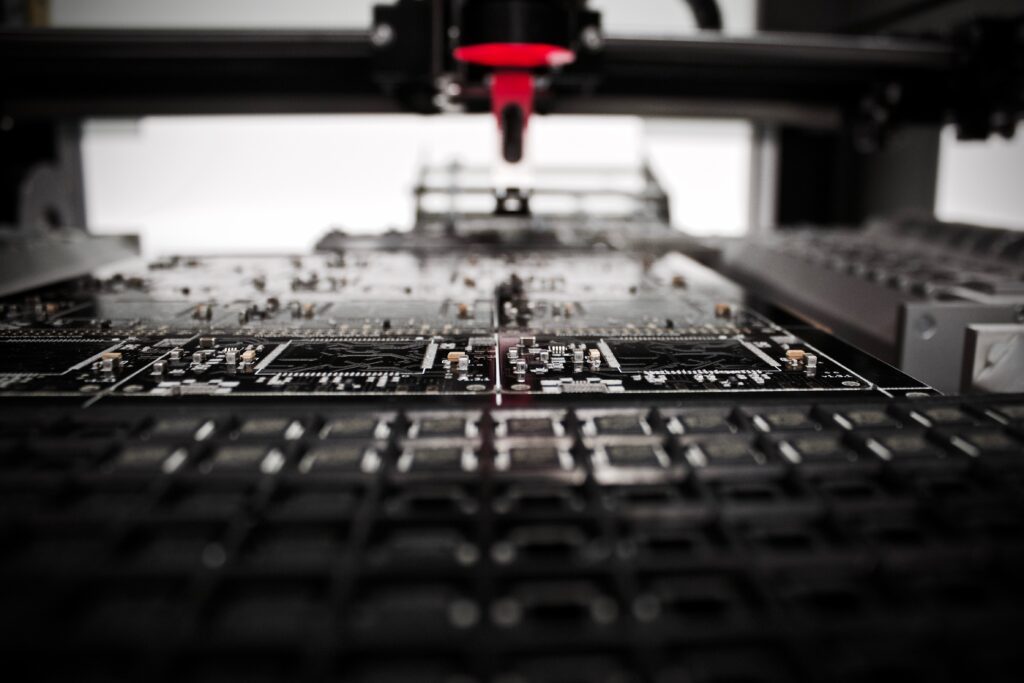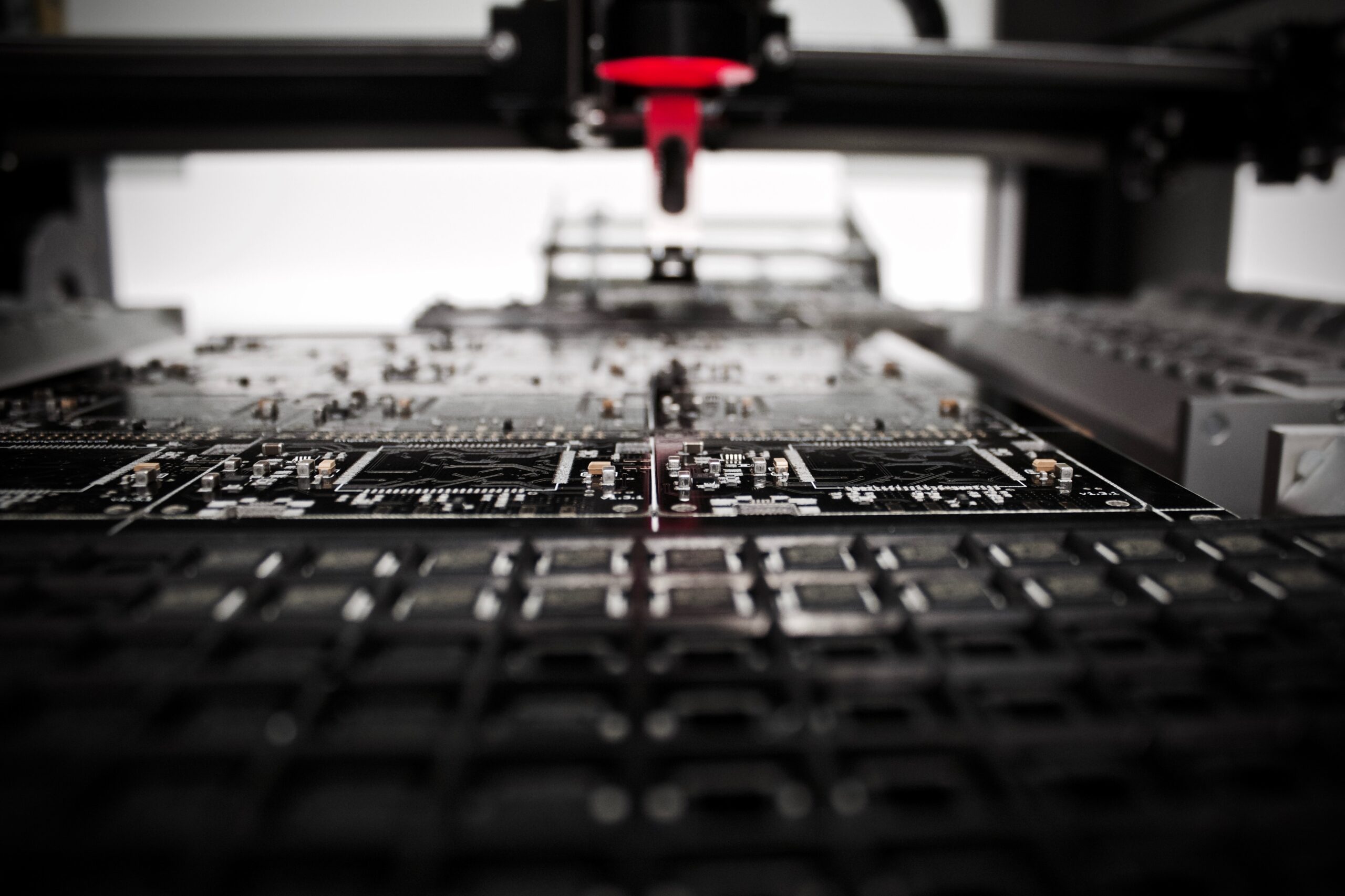I present to you an article that explores the concept of maximizing output through the implementation of Just-In-Time Manufacturing (JIT). As a manufacturing methodology that focuses on reducing waste and improving efficiency, JIT aims to eliminate unnecessary inventory and streamline production processes. In this article, I will discuss the fundamental principles of JIT, its benefits, and its potential drawbacks. Through a comprehensive analysis of case studies and industry examples, I will shed light on how JIT can significantly enhance productivity and ultimately contribute to the success of manufacturing companies.



This image is property of images.unsplash.com.
Understanding Just-In-Time Manufacturing
Definition of Just-In-Time Manufacturing
Just-In-Time (JIT) manufacturing is a production strategy that aims to optimize efficiency and minimize waste by delivering products or components precisely when they are needed in the production process. The core principle of JIT manufacturing is to eliminate any form of inventory stockpiling, thereby reducing costs and increasing the speed of production. In essence, JIT manufacturing means producing goods or services at the exact moment they are required, without any excess or unnecessary delays.
History and Origin of Just-In-Time Manufacturing
JIT manufacturing was first developed in Japan in the 1970s by Taiichi Ohno, the chief engineer at Toyota Motor Corporation. Ohno’s goal was to eliminate waste and inefficiencies in the manufacturing process by adopting a “pull” system, where each step in the production process only takes place when it is directly requested by the subsequent step. This approach was a significant departure from the traditional “push” system, where production was based on predetermined forecasts and inventory was built up based on those forecasts.
Key Principles of Just-In-Time Manufacturing
There are several key principles that underpin JIT manufacturing:
-
Elimination of Waste: JIT manufacturing aims to eliminate all forms of waste, including excess inventory, overproduction, waiting time, unnecessary transportation, overprocessing, defects, and underutilized employee talents.
-
Continuous Improvement: Just-In-Time manufacturing focuses on continuously improving processes and systems, seeking to identify and eliminate inefficiencies, bottlenecks, and non-value-added activities through a culture of continuous improvement.
-
Quality Control: JIT manufacturing places a strong emphasis on quality control, seeking to detect and resolve any defects or issues early in the production process to minimize waste and reduce the risk of costly rework or customer dissatisfaction.
-
Flexibility and Adaptability: JIT manufacturing requires a high degree of flexibility and adaptability to respond quickly to changes in demand, customer requirements, and market conditions. This is achieved through effective communication, collaboration, and coordination across all levels of the organization and with suppliers.
Benefits of Just-In-Time Manufacturing
Reduced Inventory Costs
One of the primary benefits of JIT manufacturing is the significant reduction in inventory costs. By producing goods or components precisely when they are needed, there is no need for excessive inventory stockpiling. This eliminates the need for storage space, reduces the risk of obsolescence, lowers carrying costs, and minimizes the resources tied up in raw materials and finished goods.
Improved Quality Control
JIT manufacturing places a strong emphasis on quality control throughout the production process. By focusing on detecting and resolving defects or issues early on, JIT manufacturing helps to minimize waste and reduce the risk of costly rework or customer dissatisfaction. The emphasis on quality control also leads to better overall product quality, which can enhance customer satisfaction and loyalty.
Boost in Productivity
JIT manufacturing aims to eliminate any non-value-added activities and inefficiencies in the production process. By streamlining the flow of materials, reducing setup times, and improving communication and coordination, JIT manufacturing increases productivity and reduces lead times. This can result in higher output levels and improved overall operational efficiency.
Enhanced Customer Satisfaction
Through the elimination of waste, improved quality control, and increased productivity, JIT manufacturing can lead to enhanced customer satisfaction. Products can be delivered faster, with fewer defects, and with higher overall quality. This can result in increased customer loyalty, positive word-of-mouth, and a competitive advantage in the marketplace.



This image is property of images.unsplash.com.
Implementing Just-In-Time Manufacturing
Essential Steps in Implementation
Implementing JIT manufacturing requires careful planning and coordination. Here are the essential steps in the implementation process:
-
Assessment and Evaluation: Assess the current state of the production process and identify areas of waste, bottlenecks, and inefficiencies. Analyze the feasibility and potential benefits of implementing JIT manufacturing.
-
Design and Redesign: Redesign the production process to align with JIT principles. Streamline workflows, eliminate non-value-added activities, and optimize the flow of materials and information.
-
Supplier Collaboration: Collaborate closely with suppliers to ensure timely delivery of materials and components. Establish long-term relationships and implement communication channels to enable seamless coordination.
-
Employee Training: Train employees on the principles and practices of JIT manufacturing. Provide them with the necessary skills and knowledge to effectively participate in the new production process.
-
Continuous Improvement: Implement a culture of continuous improvement, where employees are encouraged to identify and resolve inefficiencies, bottlenecks, and quality issues. Regularly monitor and evaluate the results of the JIT implementation and make necessary adjustments.
Challenges and Potential Solutions in Implementation
Implementing JIT manufacturing can be challenging due to various factors such as resistance to change, inadequate supplier capabilities, and the need for precise demand forecasting. One of the main challenges is effectively managing inventory levels and ensuring reliable and timely delivery from suppliers. To mitigate these challenges, organizations can employ strategies such as establishing strong supplier partnerships, implementing advanced technology systems for demand forecasting, and enhancing communication channels with suppliers.
Another challenge is the potential disruption to the existing production process and resistance from employees. To address this, organizations should invest in comprehensive employee training programs that focus on the benefits of JIT manufacturing and empower employees to actively participate in the implementation process.
Role of Employee Training in Implementation
Employee training plays a crucial role in successfully implementing JIT manufacturing. It is essential to provide employees with the necessary knowledge and skills to embrace the new production process and understand the principles and practices of JIT manufacturing. Training programs should cover topics such as waste elimination, quality control, continuous improvement, and effective communication and coordination. By investing in comprehensive employee training, organizations can ensure that employees are equipped to contribute to the success of JIT manufacturing implementation.
Key Components of Just-In-Time Manufacturing
Demand Forecasting
Accurate demand forecasting is crucial in JIT manufacturing to ensure the timely delivery of products or components. Organizations need to analyze historical data, market trends, and customer preferences to accurately forecast demand. By having an accurate understanding of future demand, organizations can adjust their production schedules accordingly, minimizing the risk of underproduction or overproduction.
Supplier Networks
Effective supplier networks are essential for JIT manufacturing. Organizations need to establish strong and reliable relationships with suppliers to ensure the timely delivery of materials and components. This involves regular communication, collaboration, and the establishment of long-term partnerships based on trust and mutual benefit. By having a well-established supplier network, organizations can reduce lead times, inventory holding costs, and overall supply chain risks.
Production Schedules
Optimizing production schedules is a key component of JIT manufacturing. Production schedules need to be closely aligned with customer demand and the availability of materials and components. By having a lean and efficient production schedule, organizations can minimize idle time, reduce setup times, and achieve maximum output with minimum waste.



This image is property of images.unsplash.com.
Role of Technology in Just-In-Time Manufacturing
Use of Automation and Robotics
Technology plays a vital role in JIT manufacturing, particularly through the use of automation and robotics. Automated systems can significantly improve efficiency and productivity by reducing human error, increasing speed, and minimizing setup times. It allows for the consistent and precise execution of tasks, leading to improved quality control and reduced waste.
Importance of Enterprise Resource Planning (ERP) Systems
Enterprise Resource Planning (ERP) systems are critical in facilitating the implementation of JIT manufacturing. These systems enable seamless coordination and communication between various departments, suppliers, and customers. ERP systems provide real-time data and insights that enable organizations to make informed decisions, optimize production schedules, and effectively manage inventory levels.
Role of Artificial Intelligence and Machine Learning
Artificial Intelligence (AI) and Machine Learning (ML) technologies are increasingly being utilized in JIT manufacturing. These technologies can analyze complex datasets, identify patterns, and make accurate forecasts. AI-powered demand forecasting systems can improve the accuracy of demand forecasts, enabling organizations to align production schedules with actual demand more effectively. ML algorithms can also optimize production processes by identifying inefficiencies and suggesting improvements.
Case Studies of Just-In-Time Manufacturing
Toyota’s Success with Just-In-Time Manufacturing
One of the most prominent and successful examples of JIT manufacturing is Toyota Motor Corporation. Toyota revolutionized the automotive industry through the implementation of JIT manufacturing principles. By eliminating waste, improving quality control, and maintaining a strong supplier network, Toyota has been able to achieve high levels of operational efficiency, customer satisfaction, and profitability. Toyota’s success with JIT manufacturing has inspired countless organizations worldwide to adopt similar principles.
Applicability in Other Industries
While JIT manufacturing has its roots in the automotive industry, its principles and benefits are applicable to a wide range of industries. The concept of minimizing waste, improving quality control, and enhancing overall efficiency resonates with organizations in sectors such as electronics, food and beverage, healthcare, and retail. Many organizations have successfully implemented JIT manufacturing and reaped the benefits of reduced costs, improved customer satisfaction, and increased competitiveness.
Lessons from Failed Implementations
Not all implementations of JIT manufacturing have been successful. Some organizations have faced challenges and failed to achieve the desired outcomes. There are lessons to be learned from these failed implementations. Factors such as inadequate supplier relationships, inaccurate demand forecasting, insufficient employee training, and resistance to change can contribute to unsuccessful implementations. By understanding these challenges and potential pitfalls, organizations can better prepare for successful JIT manufacturing implementations.
Maximizing Output with Just-In-Time Manufacturing
Strategies for Maximizing Output
To maximize output with JIT manufacturing, organizations can employ several strategies:
-
Optimize Workflow: Streamline production processes, eliminate bottlenecks, and ensure efficient utilization of resources.
-
Continuous Improvement: Emphasize a culture of continuous improvement to identify and eliminate waste and inefficiencies that limit output.
-
Effective Resource Allocation: Utilize resources effectively, matching production capacities with actual demand to avoid underutilization or excess capacity.
-
Supplier Collaboration: Foster strong relationships with suppliers to ensure timely delivery of materials and components, avoiding any interruptions in the production process.
Link between Just-In-Time Manufacturing and Increased Output
JIT manufacturing is directly linked to increased output. By eliminating waste and inefficiencies, JIT manufacturing enables organizations to produce more with fewer resources. The focus on quality control also reduces defects and rework, leading to higher output levels. Additionally, the reduction in lead times and optimized production schedules allow for faster production cycles, further increasing overall output.
Implications for Supply Chain Management
JIT manufacturing has significant implications for supply chain management. It requires close collaboration with suppliers, relying on their ability to deliver materials and components at the exact time required. This necessitates strong supplier relationships, effective communication channels, and an established supplier network. Supply chain management strategies need to be aligned with JIT principles, focusing on minimizing lead times, optimizing inventory levels, and ensuring reliable delivery.
Challenges and Criticisms of Just-In-Time Manufacturing
Issues with Supply Chain Reliability
One of the main challenges of JIT manufacturing is ensuring supply chain reliability. Dependencies on suppliers for just-in-time delivery can be risky, as any disruptions or delays can disrupt the entire production process. Organizations need to establish secure and dependable supplier relationships, implement contingency plans, and closely monitor the performance of suppliers to mitigate potential risks.
Critiques from Labor Perspective
Critics argue that JIT manufacturing places undue pressure on workers and leads to increased work intensity and stress. The emphasis on minimizing waste and achieving maximum efficiency can result in unrealistic production targets and tight deadlines, affecting the well-being and job satisfaction of employees. It is crucial for organizations to prioritize employee welfare, provide adequate training and resources, and foster a supportive working environment when implementing JIT manufacturing.
Financial Risks and Challenges
Implementing JIT manufacturing requires significant upfront investments in training, process redesign, and technology systems. While JIT manufacturing offers long-term cost savings, the initial costs can be substantial. Organizations need to carefully evaluate the financial risks and challenges associated with implementing JIT manufacturing and develop a strategic plan to manage these costs effectively.
Future Trends in Just-In-Time Manufacturing
Impact of Globalization
Globalization has both opportunities and challenges for JIT manufacturing. On one hand, it provides access to global markets, diverse suppliers, and resources. On the other hand, it introduces complexities such as increased lead times, fluctuating exchange rates, and geopolitical risks. To adapt to these trends, organizations need to strengthen their supplier networks, leverage advanced technology systems, and develop robust risk management strategies.
Shift towards Green and Sustainable Manufacturing
There is a growing emphasis on green and sustainable manufacturing practices. JIT manufacturing aligns well with this shift, as it aims to minimize waste, reduce resource consumption, and optimize overall efficiency. By incorporating environmentally friendly practices, such as recycling and energy-efficient technologies, organizations can further enhance the sustainability of their manufacturing processes.
Influence of Industry 4.0
Industry 4.0, characterized by the integration of digital technologies with traditional manufacturing processes, is expected to have a significant impact on JIT manufacturing. Technologies such as the Internet of Things (IoT), big data analytics, and predictive maintenance can provide real-time insights, enhance visibility across the supply chain, and improve decision-making. The adoption of Industry 4.0 technologies can further optimize JIT manufacturing, leading to increased efficiency and productivity.
Comparing Just-In-Time with Traditional Manufacturing
Differences in Cost, Quality, and Efficiency
Just-In-Time manufacturing differs from traditional manufacturing approaches in several ways. In terms of cost, JIT manufacturing minimizes inventory carrying costs, reduces waste, and eliminates the need for excessive storage space, leading to lower overall costs. Regarding quality, JIT manufacturing places a strong emphasis on quality control and defect elimination, resulting in higher-quality products. Efficiency is a key distinction as JIT manufacturing streamlines processes, reduces setup times, and eliminates non-value-added activities, leading to increased overall efficiency.
Decision Factors for Choosing Manufacturing Approach
The choice between Just-In-Time and traditional manufacturing approaches depends on various factors. The industry, product characteristics, customer demands, supply chain complexities, and organizational capabilities all play a role in the decision-making process. Organizations need to carefully evaluate their specific requirements and evaluate the benefits and trade-offs associated with each approach before making an informed decision.
Potential for Combining Both Approaches
In some cases, organizations may find value in implementing a hybrid approach that combines elements of Just-In-Time and traditional manufacturing. This allows organizations to leverage the strengths of each approach while mitigating the limitations. For example, certain industries or products may benefit from holding minimal buffer inventory for unforeseen demand fluctuations while still implementing JIT principles for the majority of the production process. By combining both approaches strategically, organizations can achieve a balance between cost efficiency, quality control, and customer responsiveness.
